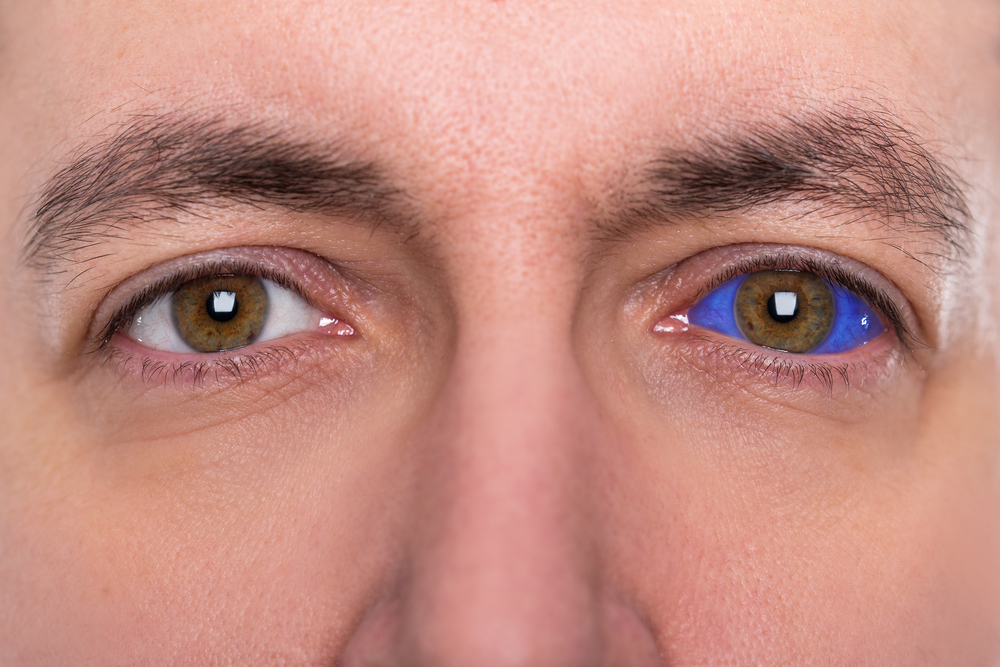Contents:
- Medical Video: 10 Unusual Birth Defects
- The most common types of congenital eye defects
- 1. Congenital cataracts
- 2. Congenital glaucoma
- 3. Retinoblastoma
- 4. Retinopathy of Prematurity
- 5. Congenital Dacryocystocele
Medical Video: 10 Unusual Birth Defects
Pregnancy is the most sacred period for optimal child development. Therefore, it is not an easy matter for parents to be aware of the fact that their babies are born disabled. One of the most common congenital defects found in newborns is eye and vision defects. What are they?
The most common types of congenital eye defects
1. Congenital cataracts
During this time you might think that cataracts only occur in people who are old. However, it turns out that newborns can also suffer from cataracts. Cataracts that occur from birth are called congenital cataracts.
The symptoms are similar to cataracts in adults, namely the cloudy eye lens that looks like there is a grayish stain on the baby's pupils. The eyepiece serves to focus the light entering the eye towards the retina, so that the eye can capture images clearly. But if cataracts occur, the light that enters the eye becomes scattered when passing through a cloudy lens, so that the image received by the eye becomes blurred and blurry.
In addition, cataracts in infants can be seen from the response of their eyes. Little ones may become insensitive to the environment. For example, a baby does not turn around when someone is beside him, or the baby's eye movements are unusual.
Congenital cataracts are usually caused by:
- Intrauterine infections (infections of the mother that transmit to the fetus), such as TORCH - toxoplasma, rubella, cytomegalovirus, and herpes simplex infections.
- Metabolic disorders.
- Other congenital defects, such as Down syndrome.
Although not all cases of congenital cataracts can interfere with a baby's vision, some cases can get worse and cause early blindness. The problem is, often congenital cataracts are not detected until after several months of the baby's life.
2. Congenital glaucoma
Glaucoma is damage to the eye nerve which causes visual impairment and blindness. Generally glaucoma is caused by high pressure in the eyeball.
Glaucoma is more common in elderly people. But this condition can be a congenital eye defect due to genetic abnormalities, eye structure abnormalities (such as iris and / or eye cornea that are not formed optimally in the womb), to become symptoms of other birth defects such as Down syndrome and Edwards syndrome.
Symptoms of congenital glaucoma can be detected from the baby's eyes which are often runny, very sensitive to light, and the eyelids often twitch.
3. Retinoblastoma
Retinoblastoma is the most common eye cancer in children. This cancer comes from retinal cells that are still young or referred to as retinoblasts. Although this cancer is a genetic disorder, 95% of retinoblastoma patients have no family history of cancer.
The most common sign is cat's eye reflex or leukocoria, which is the back of the eye pupil reflecting bright light if the light is flashed. This symptom appears in 56.1% of children born with retinoblastoma. In addition, retinoblastoma can also cause eye squint (strabismus). This is caused by visual disturbances that occur in children.
4. Retinopathy of Prematurity
Retinopathy of Prematurity (ROP) is a congenital eye defect that is caused by a disorder of retinal blood vessel formation. This condition tends to be found in premature babies.
Retinal blood vessels new fetuses begin to form at 16 weeks gestation and will only reach all parts of the retina at the age of 1 month after birth. In premature babies, there is a disturbance in the formation of blood vessels which can cause some of the retina to not get enough oxygen, and eventually damage.
5. Congenital Dacryocystocele
Congenital dacryocystocele is a congenital eye defect that occurs as a result of a blockage in the nasolacrimal duct, the channel that drains tears into the nose. The channel functions to drain the tears so as not to cause the eyes to become runny continuously under normal conditions.
The presence of blockages in this channel can cause tears to accumulate excessively in it, forming a sac. If this channel is infected, it is referred to as darcyocystitis.












